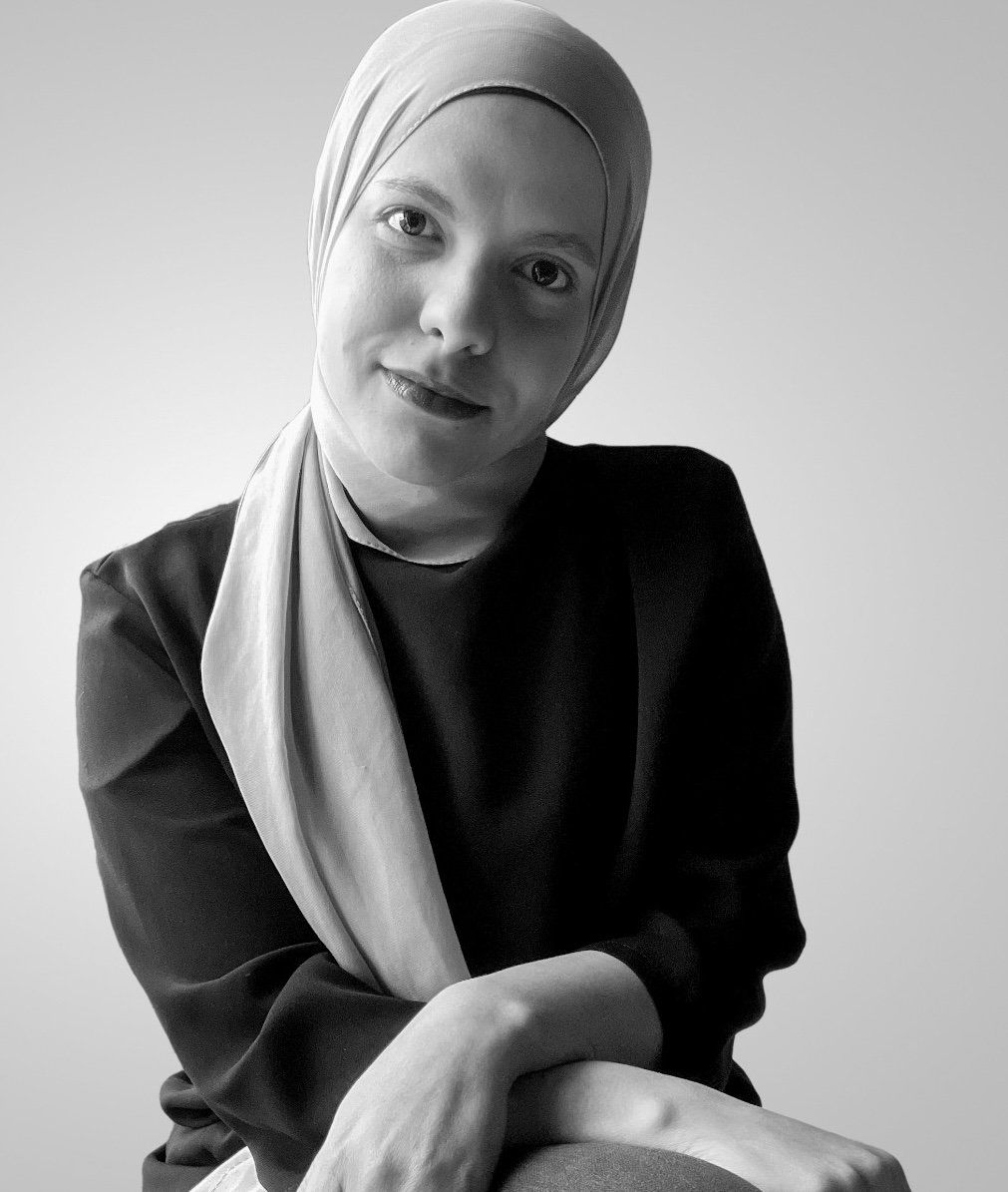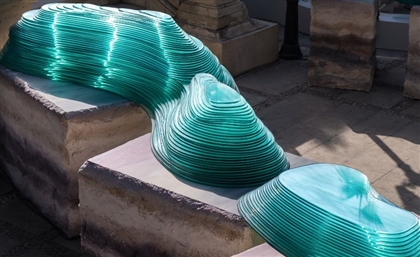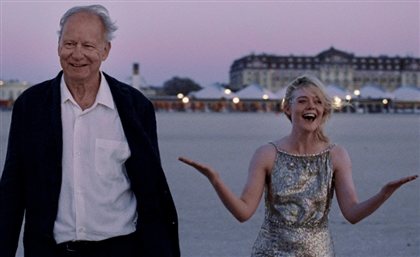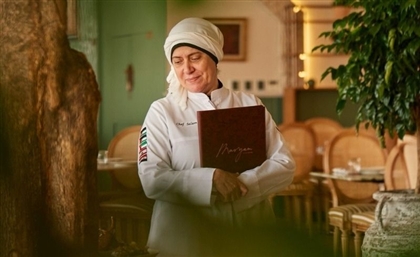The Local Show: A New Lens on Egypt’s Conscientious Architecture
‘The Local Show’ by Ramzi Makram Ebeid and Sherif Nakhla spotlights Egypt’s architecture through stories of people and place. Its Villa M launch brought design and culture into one conversation.

Zamalek’s Villa M opened its doors this weekend to launch ‘The Local Show’, a new YouTube-based docuseries created, written, and hosted by Ramzi Makram Ebeid, directed and scored by Sherif Nakhla, and powered by Marakez in partnership with Al Ismaelia for Real Estate Investment. The event gathered architects, designers, design enthusiasts and cultural figures for a day centered on Egypt’s most enduring relationship: people and place.
-bacd107e-10bc-40a8-8347-411a04915b66.jpg) The launch featured two sessions, morning and evening, both combining teaser screenings, a design exhibition, and curated dining experiences that unfolded across the villa’s spaces. The exhibition highlighted the architectural sites featured in the show’s first season: Basuna Mosque with Waleed Arafa, St. Mary’s Church with Ikram Nosshi, Ramses Nosshi, Sherif Morgan, and Youssef Ragheb, Bayt Yakan with Alaa El Habashi, and Bayt al-Razzaz with Omnia Abdel Barr. Photography by Yehia El-Alaily and Essam Arafa framed these landmarks through documentary precision, while Karim El Hayawan contributed special portraits of Waleed Arafa inside the Basuna Mosque. The display also featured original drawings by Ramses Wissa Wassef, provided by the AUC Rare Books and Special Collections Library, connecting contemporary architectural thought with Egypt’s archival legacy.
The launch featured two sessions, morning and evening, both combining teaser screenings, a design exhibition, and curated dining experiences that unfolded across the villa’s spaces. The exhibition highlighted the architectural sites featured in the show’s first season: Basuna Mosque with Waleed Arafa, St. Mary’s Church with Ikram Nosshi, Ramses Nosshi, Sherif Morgan, and Youssef Ragheb, Bayt Yakan with Alaa El Habashi, and Bayt al-Razzaz with Omnia Abdel Barr. Photography by Yehia El-Alaily and Essam Arafa framed these landmarks through documentary precision, while Karim El Hayawan contributed special portraits of Waleed Arafa inside the Basuna Mosque. The display also featured original drawings by Ramses Wissa Wassef, provided by the AUC Rare Books and Special Collections Library, connecting contemporary architectural thought with Egypt’s archival legacy.
-572e92c1-0367-4c4f-af74-fab60ce872a3.jpg) Curation played a central role in grounding the event in a local narrative. Local plants like papyrus and citrus trees were selected by Hala Barakat and provided by Mashtal Garden Center, giving the space a natural scent and rhythm that echoed the show’s interest in rooted design. Food was developed by Kesmat, Rawi, and Mennat-Allah El Dorry, and catered by Cake Café, with a menu inspired by very local cuisines from Upper Egyptian, Coptic, and Mamluk mirroring the diversity of Egypt’s built and cultural heritage.
Curation played a central role in grounding the event in a local narrative. Local plants like papyrus and citrus trees were selected by Hala Barakat and provided by Mashtal Garden Center, giving the space a natural scent and rhythm that echoed the show’s interest in rooted design. Food was developed by Kesmat, Rawi, and Mennat-Allah El Dorry, and catered by Cake Café, with a menu inspired by very local cuisines from Upper Egyptian, Coptic, and Mamluk mirroring the diversity of Egypt’s built and cultural heritage.
-1e3ec734-fcc7-4413-8f49-1abf54b158f0.jpg) “It all started with me trying to find a show to watch,” Ramzi said. “Most design shows were either too pretentious or too shallow. I wanted something that could speak to both professionals and curious viewers while highlighting architects who work with community, heritage, sustainability, and functionality. That’s what I call conscientious design.”
“It all started with me trying to find a show to watch,” Ramzi said. “Most design shows were either too pretentious or too shallow. I wanted something that could speak to both professionals and curious viewers while highlighting architects who work with community, heritage, sustainability, and functionality. That’s what I call conscientious design.”-ae9a3d0a-942b-4f6d-a7d1-97ed1d659136.jpg) For Ramzi, the pairing of Basuna Mosque and St. Mary’s Church for the first season was deliberate. Two religious spaces decades apart, both deeply tied to identity and innovation. “Wissa Wassef was a genius,” he explained. “His St. Mary’s Church changed the way Coptic architecture was conceived. And Waleed’s Basuna Mosque is the first contemporary religious project that carries the same integrity and contextual beauty since.”
For Ramzi, the pairing of Basuna Mosque and St. Mary’s Church for the first season was deliberate. Two religious spaces decades apart, both deeply tied to identity and innovation. “Wissa Wassef was a genius,” he explained. “His St. Mary’s Church changed the way Coptic architecture was conceived. And Waleed’s Basuna Mosque is the first contemporary religious project that carries the same integrity and contextual beauty since.”
-89214d17-baf7-4f29-8897-41ff89bdc20c.jpg) Waleed Arafa’s process for Basuna Mosque reflects that commitment to context. “The people of Basuna thought I’d bring them a mosque from London,” he said. “But I wanted the village to teach me. Architecture isn’t about imposing ideas, it’s about learning from what already exists.” The mosque’s handmade overlapping brick dome, its innovative structural compass, and the subtle integration of functional details from rethought ‘mimbar’ stairs to inclusive prayer spaces demonstrate a design language that balances innovation and locality prioritizing both simplicity and purpose.
Waleed Arafa’s process for Basuna Mosque reflects that commitment to context. “The people of Basuna thought I’d bring them a mosque from London,” he said. “But I wanted the village to teach me. Architecture isn’t about imposing ideas, it’s about learning from what already exists.” The mosque’s handmade overlapping brick dome, its innovative structural compass, and the subtle integration of functional details from rethought ‘mimbar’ stairs to inclusive prayer spaces demonstrate a design language that balances innovation and locality prioritizing both simplicity and purpose.-ef7e86d7-5961-4cef-a945-0d73cea5a8ce.jpg) When Sherif Nakhla joined the project six months into its development, he helped refine its rhythm and tone. “Ramzi had great content, deep research, and strong visuals. My goal was to make people feel the space,” Nakhla said. “It’s not a travel show; it’s about understanding culture through design. Even the music had to follow that calm, functional rhythm.” Nakhla restructured the episodes and composed original music to align with that vision, turning the show’s pacing and sound into an integral part of its storytelling.
When Sherif Nakhla joined the project six months into its development, he helped refine its rhythm and tone. “Ramzi had great content, deep research, and strong visuals. My goal was to make people feel the space,” Nakhla said. “It’s not a travel show; it’s about understanding culture through design. Even the music had to follow that calm, functional rhythm.” Nakhla restructured the episodes and composed original music to align with that vision, turning the show’s pacing and sound into an integral part of its storytelling.-9243545e-b32f-472e-8b53-2e9a387668f8.jpg) Across both sessions, the atmosphere reflected the same mindset: grounded, curious, and layered. The event’s details from curated plants to archival sketches connected the show’s focus on Reflection, Respect, Relation, Reconnection, and Renewal to a broader conversation about Egyptian design today.
“We don’t need extravagance to have beautiful designs,” Ramzi added. “We need work that’s passionate, well-researched, and rooted in context.”
Across both sessions, the atmosphere reflected the same mindset: grounded, curious, and layered. The event’s details from curated plants to archival sketches connected the show’s focus on Reflection, Respect, Relation, Reconnection, and Renewal to a broader conversation about Egyptian design today.
“We don’t need extravagance to have beautiful designs,” Ramzi added. “We need work that’s passionate, well-researched, and rooted in context.”
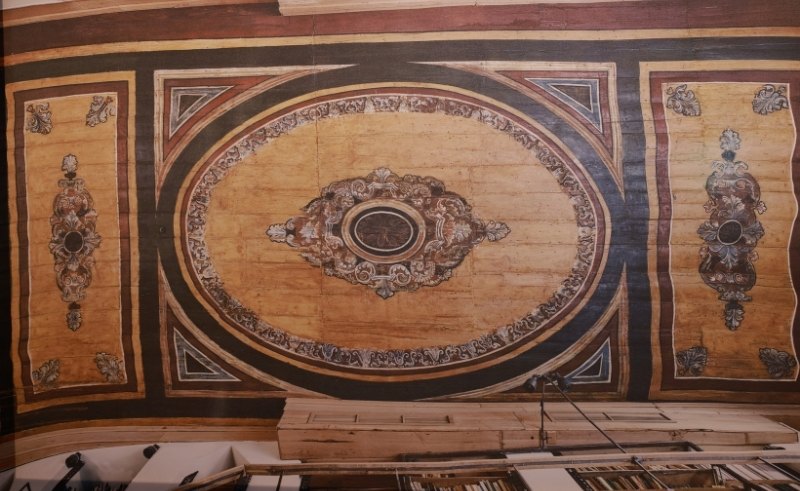 The Local Show premieres on November 15, with plans to expand regionally in future seasons. Its mission is clear: to document architecture that listens to its people, its history, and its environment.
The Local Show premieres on November 15, with plans to expand regionally in future seasons. Its mission is clear: to document architecture that listens to its people, its history, and its environment.







